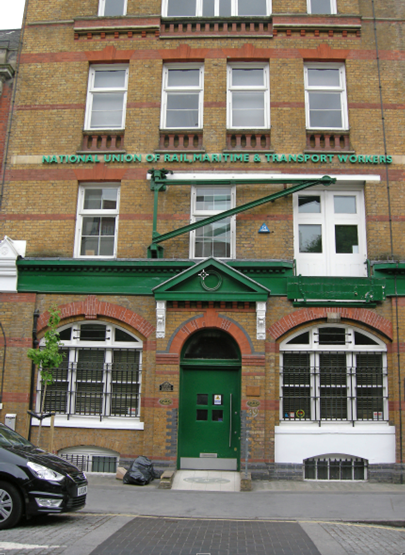 “Are we speaking off the record?” That’s how almost every conversation on this subject starts.
“Are we speaking off the record?” That’s how almost every conversation on this subject starts.
“Don’t quote me directly, will you? Or mention my company? We’re talking to the unions and we would not like this to be taken the wrong way.”
So the RMT still wields considerable influence. Rail executives rarely speak well of it. But they are wary of publicly discussing the legacy of the Southern strikes, desperately keen to avoid antagonising a union that routinely ballots for a strike as the opening gambit in any negotiation.
On this occasion, therefore, RailReview cannot present for you the particular perspectives of the captains of our industry. I have spoken to many different people to compile these views - you will just have to trust me on that.
Trust is a word that people use a lot… mainly in a negative sense.
“This dispute has been all about a breakdown in trust,” I have been told several times. “Clearly on Southern there is no trust between management and the unions, and with the RMT in particular.”
“Some of the accusations they have made against each other are going to take years to repair.”
“They have repeatedly called each other liars. The RMT says Govia Thameslink Railway is dishonest, broken, a Government mouthpiece. It accuses GTR of profiteering at the expense of safety, even when it knows the franchise is losing money. There is no way back from that position with honour.”
“The RMT has spent a year demanding something it knows cannot be offered, and the company imposed changes it knew the RMT could not accept. The problem now is that the union intends to treat the rest of us the same way. The result is going to be a painful war of attrition in which everyone loses.”
At the time of writing, ballots are being held on Merseyrail and Arriva Rail North over the companies’ unwillingness to offer cast-iron guarantees that they would never operate a train without a second safety-qualified member of staff on board. Other franchises actively contemplating extensions of Driver Only Operation (DOO) are watching nervously.
“From the passenger point of view, Southern provides a pragmatic template for how DOO and second member staffing might work in other parts of the industry,” says Transport Focus Chief Executive Anthony Smith.
“How it is negotiated and implemented will be guided by this dispute, which must have exhaustively explored all aspects of it.
“The ex-guards, now On Board Supervisors, are feeling rather raw. The legacy of poisoned industrial relations and strained personal relationships is going to take time to work through the system.”
“Discussions with the unions have become more difficult over the last year,” admits an executive at one of the big train operators.
“Compared with 18 months ago, we find it more challenging to have honest conversations with the unions. We don’t want those conversations about operational improvements to fall into dogmatic political arguments. And in this context we’re not even discussing Driver Only Operation!
“That strain has certainly slowed the pace of change. We are in a good place, we have stayed respectful, and we have been discussing how we introduce new trains. We’ve always said we will have a second member of staff on board in normal circumstances, and that hasn’t changed. But it is taking a long time.”
Another operator points out that only in very rare cases will the number of customer-facing employees reduce. Almost the entire railway is continuing to grow, and more passengers will require more staff, he says. But the way in which those staff are deployed is changing as a consequence of increasing automation.
“We cannot afford to have the RMT hijack that with a safety argument that doesn’t stack up,” he says.
But… “If I was running the RMT I would play the safety card, too,” confesses a former managing director of a train operator, now in a role with an interest in the dispute.
“That’s because it is the only card the union has left to play, and we all know the safety argument isn’t there. The evidence that Driver Only Operation is safe is simply overwhelming.
“It was entirely predictable that Southern would seek a deal with ASLEF. It was also hugely predictable that the RMT would carry on, and accuse ASLEF of betrayal.
“I was struck by the similarity to the old disputes of the 1980s, because the whole RMT position is the same now as it was then. And it is being ended by splitting the two trade unions exactly as it was then.
“In 1982 the two-week strike was about flexible rostering. It was called the NUR then, but otherwise it could be the same thing happening today.
“The RMT has been bellyaching about not being involved in the talks with ASLEF at the TUC. Of course it wasn’t involved! Because the company had to make sure the RMT was scuppered. The union is going to be very bitter about it for a very long time.
“Because this strike has so far been regional and not national, it has been much easier for the trade unions to manage. On a national strike, union finances start to creak very quickly. On a regional level, the strike can be financed from the rest of the country. I would guess a lot of the guards haven’t suffered too heavily financially because they’ve been helped out by the rest of the RMT. That’s the way it works. You can sustain a regional strike for an awful lot longer.”
The last strike about Driver Only Operation was in 1993, and the arguments have barely evolved over the 24 years since then. But during previous strikes the passenger voices were more muted. Social media has transformed that. Public pressure has increased exponentially, because information is disseminated in seconds, rather than hours and days in the past.
When cancelled trains leave passengers stranded on platforms, they take to Twitter and post evidence on Instagram. The articulate, vocal and tech-savvy Association of British Commuters was formed by a handful of Brighton season ticket holders, who came up with the #SouthernFail hashtag and quickly gained 4,000 followers. It enabled passengers to unite, raising sufficient money to launch legal action against the Department for Transport.
Passengers caught in the Southern strikes have frequently complained to the TV cameras about being helpless victims. In fact, they have never before wielded so much influence on public opinion. Their heartfelt tales of lost jobs, changed careers and damaged family lives have provoked debates in Parliament and hundreds of front-page headlines that generate interest far beyond the affected communities in Surrey, Sussex and Hampshire.
“In 1992, to contact the boys who were on strike, the only thing you could do was post a letter to their homes,” says the former train company managing director.
“Now passengers on the train have a better idea of what is going on than the staff. They can check on their phones, whereas the guard is busy doing other things.
“In many ways the strike is ‘same-old same-old’. But the dynamics are different. Social media has made it less of a closed trade dispute and more of a political argument. It’s so open. Everyone knows exactly what is going on. If one side makes an untrue statement or an exaggeration, it is torn apart, but only after it has been shared and circulated thousands of times.”
Anthony Smith believes the RMT will struggle to extend the Southern strike into a national campaign. On Merseyrail, the decision to finance a new fleet of DOO rolling stock was taken by a Labour administration, which calculated that better trains would generate far more job opportunities than the limited number of guard posts that would have to be lost.
“A Labour authority taking on the RMT is an extraordinary state of affairs that demonstrates how the union is out on a limb,” says Smith.
“If the business case for new trains had a requirement for a conductor to shut the door on every service, then the business case would not be there. It’s a very powerful demonstration of ‘passenger passim’.
“The big difference between the disputes in Liverpool and on Southern is that there are alternatives for passengers on Merseyside. That will reduce the impact of any strike or overtime ban. As we’ve seen with the recent shutting of the Mersey Tunnel to the Wirral, a very effective bus service can provide a reasonable alternative. And it’s still possible to drive your car into Liverpool, to a degree.
“There’s an element of choice that hasn’t been there for passengers during the Southern strikes. I think that will stiffen the resolve of the local authorities to sit this out and fight the war of attrition.”
Smith says Transport Focus will not take a view on the safety aspects of the disputes. He says that if the independent safety regular is willing to pronounce that implementation of driver-controlled operation on Southern is perfectly safe, then that should be the end of the debate.
“Where we do want to have input is in the visible presence of additional staff,” he says. “All our research shows that passengers like to see staff for information, for reassurance, and in extreme circumstances for protection. Whether those staff are on board the train or on the platform, the ability to see more of them is worth further discussion.”
Another old railway hand who has felt the wrath of the RMT laments the loss of the late Bob Crow as general secretary.
“The great joy of dealing with Bob Crow was that when you reached an agreement, it stuck,” he says.
“You shook hands and Crow made it happen. The way his union operates, I don’t underestimate how difficult that was for him. He was worried about the long-term future of the railways, just as we were. He understood that changes had to be made. That sense has gone now. They are just lashing out.”
There is wide acceptance among senior executives that driver-controlled operation will become increasingly commonplace. One in three trains on the network already work this way, and London Underground has used it for decades. Union opponents of driver-controlled platform dispatch have produced no convincing evidence to suggest it is anything other than safe, although the Chief Inspector of Railways has highlighted room for improvement.
“Hardly any trains are being designed anywhere in the world on the assumption that there will be staff on board other than the driver,” says a well-known industry leader.
“Most trains are now built in the knowledge that there may be another person on the train, but that person is not essential to the operation of the train.
“Once you start building trains that way, there is no going back. The refurbished train market is being eroded, because new trains are a lot cheaper than they used to be. There are new players coming into the UK, so we are not reliant on the established manufacturers. This makes refurbishing a less attractive choice.
“The rate at which new trains are arriving to meet growing demand is increasing. All the dynamic forces in the industry are pushing out older trains which require guards. That process is not somehow going to be undone.”
Train builders and their financiers also want their vehicles to be future-proof. The new fleet of Siemens trains for Windsor Line services from Waterloo will initially carry guards, because all South West Trains services carry guards. But the new franchise that will appear in August includes a requirement for the two bidders to propose options for Driver Only Operation.
Siemens makes trains that work for 30 years, far beyond the transient requirements of the initial franchisee. That includes full DOO capability, as well as easy transfer from third rail power supply to overhead wires.
“Is the RMT going to fight this, franchise by franchise, every step of the way?” questions an industry leader.
“New rolling stock marks a step-change in any franchise. If it is going to be delayed, costs rise. If you start tripping over these hurdles, the financial numbers in a franchise bid start to go awry very quickly. So bidders have to price that into their risk equations. That’s what the bidding will boil down to - how the companies price union disruption. Will they take the risk that they can keep the RMT on side during fleet replacement? The Southern experience suggests that would be quite a gamble.
“If you decide the cost of switching to DOO is a delay of one year or 18 months, you can price that into the bid. A conservative bidder would say that’s a risk it is not prepared to take, because it cannot control a political battle. It would say the Government must fund it. The Department for Transport would respond that the whole point of franchising is that the private operator takes the risk.
“It’s clear that politics will play a huge part in this. It’s not just an operational debate. The safety argument was done and dusted long ago - it’s not a factor. The RMT knows perfectly well that it’s not. It politicises an operational decision.
“With Jeremy Corbyn suggesting he would be prepared to join a picket line to stop DOO, it also becomes an internal Labour Party issue, just as a previous generation played it under Michael Foot.”
The debate is moving north. A spokesman for Arriva Rail North says the company cannot guarantee a conductor on all of its passenger services in future: “We are in the early stages of developing our modernisation plans to bring customers a better railway, so we believe the RMT is extremely premature in calling a ballot for strikes. We want to protect jobs and pay.”
The RMT is having none of that. “This dispute was entirely preventable,” General Secretary Mick Cash has announced in the public war already being fought out through belligerent news releases, emailed almost daily to hundreds of journalists.
“We will fight to retain the safety-critical role of the guard. The company has not listened to the union’s deep-seated safety concerns, has not taken them seriously, and not put passenger safety before profit.”
The union says its position against drivers opening and closing the carriage doors is clear. The intemperate language is unchanged from the Southern exchanges repeated exhaustively since December 2015… and barely different from those said by a previous generation in the 1990s.
“We have so far avoided some of the communications issues with the unions that led to the panic button being pressed on Southern,” says another train operator with some DOO.
“We were looking for an agreement that benefited all, by taking a more collaborative approach. We’re seeing how quickly the Southern issue has escalated elsewhere. We can’t fall into the same trap, but equally we can’t delay doing a deal more than a few more months. The big issue is trusting the unions.”
A senior consultant adds: “I thought by now the battles with unions would be different. I thought we would be fighting about Automatic Train Operation with no driver.
“Transit systems are being introduced in different types of places all over the world, and they are nearly all automated and driverless. Digital technology is coming in for signalling systems. How long will it be before we no longer need a driver sitting in the front of a train?
“We are not far away in terms of technology. Whether everyone would be comfortable with the concept of a driverless high-speed train is a different issue. but look how close we are to having cars on the road without drivers. Trains are technically a much simpler concept.
“It took 50 years for the railway to get rid of arms on sticks for signals. It’s taking us 50 years to get rid of lights on sticks. Most people seem to think it will take 30 years to convert to a fully digital railway.
“But the more I see about the uncontrolled systems of driverless cars, the more certain I am that the easily controlled system of the railway will become driverless. Road systems are decades ahead of us already. How is that in the best interests of the railway?”
One result of the Southern strikes is that the RMT is being inexorably sidelined. It is not irrelevant - yet. There have been 29 days of strike action at the time of writing, and more seem inevitable.
But during the first days, Southern struggled to run 50% of services - those that did operate were largely in the Metro area of south London, which has long been driver-only territory. Gradually, more trains were introduced on the Brighton Main Line, followed by shuttle services on the Arun Valley route and along the Coastway. Evening services were slowly restored. On the most recent strike days, almost four out of five trains have run. Given that Southern remains by far the poorest-performing franchise in the country, that’s not wildly different from a normal day.
“It’s not really in anyone’s interests to destroy the union,” concludes the consultant. “But if the RMT doesn’t come around, it will become irrelevant. Southern is getting closer to managing perfectly well with or without union support.
“If you look at Automatic Train Operation without drivers on transit systems around the world, part of the reason that has been done is to de-unionise the workforce. Docklands Light Railway wasn’t done for that purpose, but around the world virtually all the new systems are driverless.
“The unions need to think very carefully about what they wish for, and what position they want to be in over the longer term.”

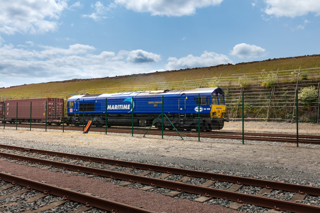
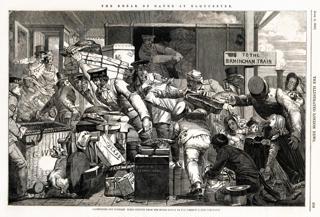
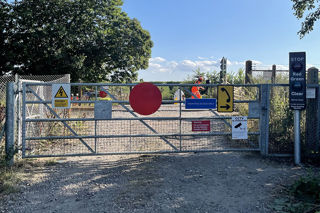
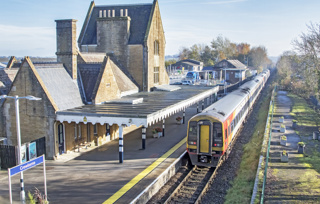


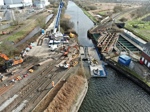









Login to comment
Comments
No comments have been made yet.